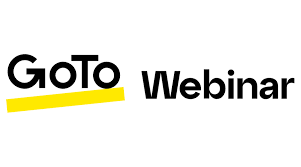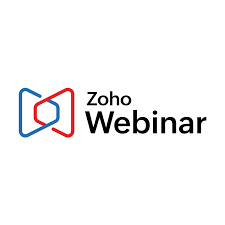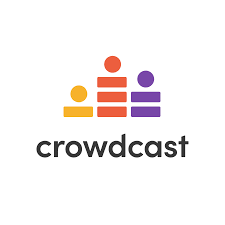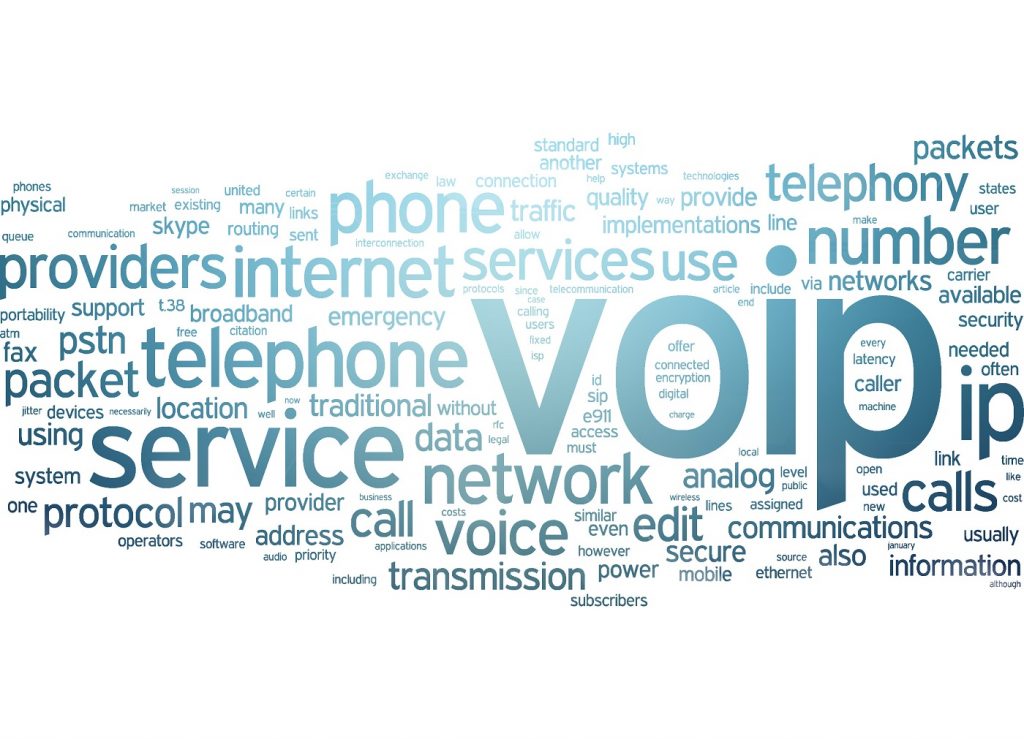As virtual meetings become integral to 21st-century workspaces, many video conferencing platforms have emerged to facilitate digital gatherings and enhance online attendance capacity. When organizing events or large meetings, webinar software allows you to livestream and share presentations, engage with attendees, and record employee training sessions.
These platforms can also integrate with your calendar and marketing tools to register participants for current and future events. The following list includes the best webinar platforms and guidance on choosing the best webinar software for your business.
- Webex Webinars and Events: Best overall platform for webinars
- Livestorm: Best for event automation
- GoToWebinar: Best for small businesses
- Zoho Webinar: Best for marketing and sales-focused webinars
- Crowdcast: Best for live video streaming
- Zoom Webinar: Best for audience engagement and analytics
Comparing the best webinar platforms
Best webinar platforms
Overall score out of 5
Monthly price
Key features

4.53
$68.75 per user for 1,000 participants
- Unlimited webinars
- Practice sessions
- Registration management

4.46
$99 for 100 active contacts
- Recording control
- Event automation
- Virtual whiteboards

4.32
$59 for 250 participants
- Breakout rooms
- Automated emails
- Reporting analytics

4.31
$8 for 100 attendees
- CRM integrations
- Screen-sharing
- Polls and Q&A

4.26
$49 for 100+ attendees
- HD video and recording
- Stripe integration
- Multiplatform streaming

4.21
$79 for 500 participants
- Calendar holds
- Ticketing
- Event analytics

Webex Webinars and Events: Best platform for webinars
Overall Score
4.53/5
Core features
5/5
Integration and compatibility
4.5/5
Security and reliability
4.17/5
Pricing and value
4.06/5
Customer support and usability
4.5/5
Advanced features
5.5/5
User scores
4.47/5
Pros
- Unlimited webinars with over 10,000 attendees
- CRM integrations with Salesforce, Eloqua, and more
- Live polling, surveys, and Q&As with Slido
- Registration management and custom-branded pages
Cons
- Plans start at 1,000 attendees, which isn’t beneficial for small teams
- More complex and less intuitive than other platforms
Why I chose Webex Webinars and Events
Webex Webinars and Events is one of the best platforms for webinars because it offers all the features required to host successful events. Each plan provides unlimited webinars for 1,000 to over 10,000 meeting attendees, making Webex an excellent option for large teams and enterprise operations. You can also customize your webinar with colors and themes that reflect your business or brand aesthetic.
The platform offers a wide range of integrations with various services that can enhance large meetings, including features like live polling and other interactive elements through the Slido platform. Sales and marketing teams can benefit significantly from CRM integrations, which enable seamless gathering of customer data. Additionally, a Webex Meet plan is included with every Webinar or Events subscription purchase if you wish to use your subscription for smaller meetings and events.
However, since Webex plans start at 1,000 attendees, it may not be the best choice for smaller businesses. If you need more flexible options for meeting size, consider GoTo Webinar, which provides webinar subscriptions for 250 to 3,000 participants.

Livestorm: Best for event automation
Overall Score
4.46/5
Core features
4.29/5
Integration and compatibility
4.75/5
Security and reliability
5/5
Pricing and value
4.06/5
Customer support and usability
4/5
Advanced features
4.5/5
User scores
4.6/5
Pros
- Automated webinar invitations, actions, and analytics
- Unlimited team members across plans
- Free webinar plans for smaller meetings and events
- Multiple security certifications, including GDPR compliance
Cons
- Limited services and CRM integrations outside of the Enterprise plan
- Webinars are capped at 12 hours on the highes
Why I chose Livestorm
Although Livestorm offers live and on-demand events, it is the best webinar platform for event automation. One of the most challenging aspects of hosting an event is organizing and planning it. However, automation simplifies the process of sending invitations, starting and ending events on time, and collecting information from attendees during and after the event.
With Livestorm, you can fully automate your webinar software by scheduling recurring events or playing pre-recorded videos to start or host an event. Before an event, you can configure your webinar settings with custom branding and registration pages; after the event, you can collect detailed analytics from attendees.
However, many webinar services offered by Livestorm are only available on the Enterprise plan, with minimal features on the free plan. Additionally, the free plan allows only up to 20-minute webinar sessions, while the Enterprise plan extends to 12 hours, which might not be sufficient for longer events. If you require an all-day livestream or recording, consider Webex Webinars, which provides 24-hour sessions on its Webinar and Events plans.

GoToWebinar: Best for small businesses
Overall Score
4.32/5
Core features
4.11/5
Integration and compatibility
4.25/5
Security and reliability
5/5
Pricing and value
3.75/5
Customer support and usability
4.25/5
Advanced features
4.5/5
User scores
4.4/5
Pros
- Unlimited cloud storage on the highest tier plans
- VoIP-enabled webcasting for up to 20,000 participants
- GoTo Stage platform for marketing and event promotion
- Collaborative tools like breakout rooms, polling, and Q&As
Cons
- Webinars are capped at 3,000 participants
- Livestreaming isn’t available on the base plans
Why I chose GoToWebinar
Most webinar platforms are geared toward larger enterprises, making it difficult for small businesses to find a scalable platform that fits their needs. However, GoToWebinar offers the best webinar software for small businesses through its affordable plans and intuitive interface.
The GoTo platform utilizes software to make meetings easily accessible across devices, with a mobile app and collaborative tools for increased audience engagement. Additionally, the highest tier subscriptions come with access to the GoTo Stage platform, which is excellent for small businesses that want a place to market and promote their events. You can also webcast virtual events to a larger audience as your business grows.
At the same time, because GoToWebinar offers a simpler service, the platform doesn’t provide specific features central to webinar software, such as livestreaming and business integrations. If you want a platform geared towards streaming events on multiple platforms, I recommend Crowdcast, which offers HD live video and recordings at a similar starting price ($49/month).

Zoho Webinar: Best for marketing & sales-focused webinars
Overall Score
4.31/5
Core features
3.39/5
Integration and compatibility
4.75/5
Security and reliability
5/5
Pricing and value
5/5
Customer support and usability
4/5
Advanced features
3.5/5
User scores
4.5/5
Pros
- Dial-in numbers for VoIP-enabled webinar attendance
- Unlimited webinars across all plans
- Webinar registration tracking links and analytics
- Integration with Zoho software for marketing and customer relationship management
Cons
- Doesn’t have breakout rooms
- On-demand webinars are only accessible on the Enterprise plan
Why I chose Zoho Webinar
Zoho is a brand synonymous with customer relationship management and marketing, making Zoho Webinar an easy choice as the best webinar platform for marketing and sales-focused events. Especially for businesses already using another Zoho platform to manage campaigns and customer outreach, the webinar platform seamlessly integrates with other Zoho products like Zoho CRM for marketing and Zia for access to AI features.
By providing access to customizable registration forms and source tracking, you can collect data on where your event attendees are coming from to tailor marketing campaigns to specific audiences or platforms. Multiple VoIP features, such as dial-in audio and access to toll-free numbers, allow you to reach a wider audience through remote meeting access.
At the same time, while Zoho Webinar works well for generating and nurturing leads, it doesn’t have some more collaborative virtual event features, like breakout rooms and on-demand recordings, available on other webinar platforms. Therefore, I recommend Livestorm for more engaging and interactive features.

Crowdcast: Best for live video streaming
Overall Score
4.26/5
Core features
4.82/5
Integration and compatibility
3.75/5
Security and reliability
5/5
Pricing and value
5/5
Customer support and usability
2.75/5
Advanced features
5/5
User scores
4.5/5
Pros
- Multi-session events for hosting online courses and workshops
- HD video with recordings for instant replays and download
- Integrations with monetization tools like Stripe
- Multiplatform streaming and stage management
Cons
- Lacks robust artificial intelligence features
- Sessions are limited to six hours on the highest plan
Why I chose Crowdcast
Crowdcast is the best webinar software for live video streaming because of its diverse features that accommodate many virtual events. With multi-session events, you can host large-scale meetups like festivals, courses, or conferences, which allow you to admit attendees through a single URL with multiple online spaces. Integrations with monetization platforms like Stripe also enable you to charge or collect donations for your events.
Across all plans, users have access to HD-quality video and webinar recordings, which make it easier to download and share live events. Instead of just live streaming on the Crowdcast platform, you can stream your events through multiple platforms simultaneously, such as Facebook Live, YouTube Live, and LinkedIn Live.
Although Crowdcast provides access to live streaming features across multiple platforms, the webinar sessions are limited to six hours. Additionally, while many webinar platforms include some form of artificial intelligence, such as an AI assistant or real-time transcription and captioning, Crowdcast does not offer these features in its webinar subscriptions. If you wish to adopt more AI-enabled features, consider Zoho Webinar, which integrates with the Zia assistant for post-event notes and transcriptions.
Zoom Webinar: Best for audience engagement & analytics

Zoom Webinar: Best for audience engagement & analytics
Overall Score
4.21/5
Core features
3.93/5
Integration and compatibility
4.75/5
Security and reliability
4.17/5
Pricing and value
4.06/5
Customer support and usability
4.5/5
Advanced features
4/5
User scores
4.57/5
Pros
- Webinar reports with performance and engagement statistics
- Supports a high capacity of webinar attendees
- Virtual event lobby for networking among participants
- Audience participation features like polling, Q&A, and surveys
Cons
- Access to breakout rooms requires a Zoom Events or Zoom Sessions license
- Higher price point than many other providers
Why I chose Zoom Webinar
Zoom is one of the best video conferencing platforms on the market, so it is no surprise that it has made the list of the best webinar platforms. What sets Zoom Webinar apart is the number of attendees that can be admitted into an event and the level of audience engagement and analytics available. The Zoom Webinar plans enable you to host events with over 10,000 participants, making it an excellent option for large teams and enterprises.
Even with these large events, there are various audience engagement options available, such as in-event polls, surveys, and Q&As. The virtual lobby also allows attendees to engage beforehand, providing a form of networking. After the event, Zoom offers comprehensive webinar reports with detailed attendance metrics, which can help you create more effective events.
Although Zoom is one of the most popular webinar platforms, it is priced at the higher end of the spectrum. Many essential webinar features, such as breakout rooms, require one of Zoom’s higher-tier licenses for access. Therefore, those seeking a more affordable platform should consider Zoho Webinar, which costs less than half of Zoom for the same number of attendees.
Key factors to consider when choosing a webinar platform
Before choosing a webinar platform, consider how you plan to use the software and whether it will support the types of events you host. Specifically, the following list includes the key factors to consider:
- Audience size: The primary difference between webinar software and a video conferencing subscription is the number of attendees that can attend the meeting. While most of these platforms accommodate between 100 and 1,000 participants, some can host thousands, so you should ask yourself how many attendees you plan to have before choosing a subscription.
- Features: Each webinar software offers a different suite of features depending on the type of meeting you need. While some software offers more audience engagement, like breakout rooms and polls, others make it easier to plan recurring events with registration management and monetization tools.
- Integrations: Most webinar software offers integrations with calendar apps, but businesses that use events to generate leads should consider integrations with CRMs or email marketing platforms. Additionally, some marketing platforms offer webinar software, making it easier to increase sales.
- Pricing: One of the most significant differences among the various webinar platforms is their pricing. Many providers charge per attendee, so compare prices based on the meeting size and license requirements. While some webinar software is priced similarly to video conferencing platforms, the more enterprise-grade options tend to be more expensive.
- Ease of use: Another key factor in choosing a webinar platform is its intuitiveness for both the host and attendees. Especially when hosting large events, you cannot spend the same amount of time troubleshooting potential issues that attendees or meeting hosts have, so take advantage of any product demos or free trials before purchasing a plan.
- Scalability: For growing businesses, choosing a platform that offers multiple plans and subscriptions and the option to increase the number of your meeting participants over time is also beneficial. This ensures that the webinar platform will grow with you over time.
How to choose the best webinar software
Overall, selecting the best webinar software requires an understanding of your desired outcomes from the platform. If you are invested in engaging and interactive meetings among audience members, choose a platform like Zoom Webinar. In contrast, if you need a webinar platform to convert leads, consider Zoho Webinar.
While Webex is the best webinar platform for this list, it is also one of the best options on the market for large teams that need enterprise-grade security. For those looking to create engaging live-streaming events, Livestorm and Crowdcast are excellent platforms for interactive experiences. However, if you are a small business owner, GoTo Webinar is the ideal solution, with an intuitive interface and advanced features.





